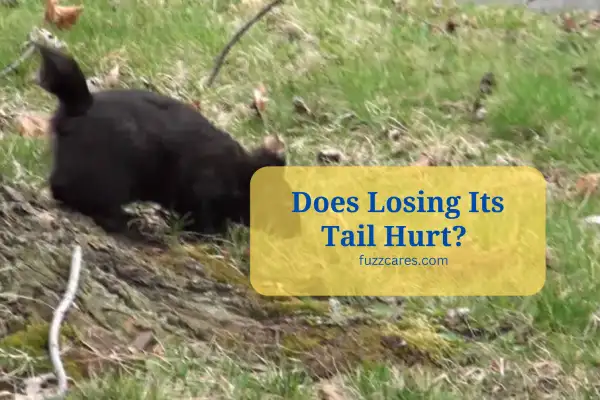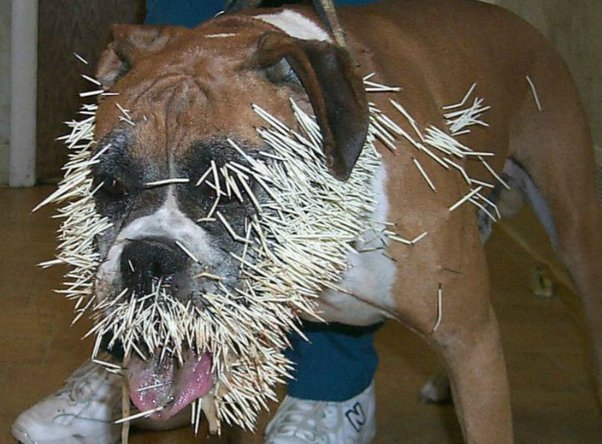Does it hurt when a squirrel loses its tail? The answer may surprise you. While it may seem like a painful ordeal for these bushy-tailed creatures, squirrels actually have a remarkable ability to adapt and heal.
Their tails play a crucial role in their daily lives, helping them maintain balance, communicate, and even escape predators.
So, losing a tail is indeed a significant event for a squirrel, but they are able to cope and continue living their squirrelly lives.
Curious to learn more about these resilient creatures and how they manage without their beloved tails? Let’s dive in and explore the fascinating world of squirrels!
Here are the some fact when loses tails, including reasons why losing a tail might cause discomfort and reasons why it generally doesn’t hurt:
| Reason | Does It Hurt? | Explanation |
|---|---|---|
| Autotomy Mechanism | No | Squirrels possess an autotomy mechanism, allowing them to shed their tails voluntarily when necessary without pain or injury. This is a defense mechanism to escape predators. |
| Lack of Nerve Endings | No | The tail of a squirrel does not contain nerve endings similar to the rest of its body, making it relatively insensitive to pain. |
| Regeneration Ability | No | Squirrel tails have the remarkable ability to regenerate, ensuring no lasting harm even if a tail is lost. |
| Immediate Function | Temporary Discomfort | While the loss of a tail itself doesn’t hurt, it may cause temporary discomfort as squirrels rely on their tails for balance and communication. They adapt over time. |
| Preventing Predation | Survival Strategy | Tail loss is a survival strategy. It allows squirrels to escape predators, prioritizing survival over potential discomfort. |
| Natural Occurrence | No | Tail loss is a natural occurrence in a squirrel’s life and is part of their biology. It doesn’t result in pain or suffering. |
| Protective Measures | Temporary Stress | Losing a tail may stress a squirrel initially, but they adapt quickly and continue their daily activities without pain. |
| Adaptation | Adaptive Response | Squirrels are adaptable animals. They learn to compensate for the loss of their tail, minimizing any negative impacts. |
| Pain Perception | Limited to Body | Squirrels can perceive pain in their body but not in their tails, which lack the pain receptors found in other body parts. |
| Health Maintenance | No Long-term Effects | Squirrels maintain their health even after tail loss, showing that it doesn’t result in lasting harm or pain. |
| Potential Discomfort | Temporary Pain | Although not a typical response, in rare cases, tail loss could potentially cause temporary pain or discomfort as it is a sensitive area for the animal. However, this is not common. |
| Injury or Infection | Yes | If the tail is lost due to injury or infection, it can cause pain and discomfort. In such cases, squirrels may experience distress and seek medical attention. |
| Psychological Stress | Yes | Tail loss can lead to psychological stress, especially if it impacts the squirrel’s ability to perform essential functions. This stress may indirectly cause discomfort. |
The table includes reasons why losing a tail might cause discomfort, as well as reasons why it generally doesn’t hurt.
What happens if a squirrel loses its tail?
For many of us, squirrels are adorable creatures that fill our backyards and parks with their lively antics. If you’ve ever wondered what happens if a squirrel loses its tail, you may have also pondered whether it causes them pain.
In this article, we will explore the topic of whether or not it hurts when a squirrel loses its tail, diving into the biology, behavior, and resilience of these furry little acrobats to uncover the truth.
The Function and Importance of a Squirrel’s Tail
Before we delve into whether a squirrel experiences pain when losing its tail, it’s important to understand the purpose and significance of this unique appendage. A squirrel’s tail serves multiple functions, including:
- Balance: The tail acts as a counterbalance, helping squirrels maintain stability while maneuvering across tree branches and other precarious surfaces.
- Communication: Squirrels use their tails to communicate with other members of their species. Various tail positions and movements convey messages about danger, territory, and mating availability.
- Warmth and Protection: During colder months, a squirrel’s tail acts as a cozy blanket, providing insulation to keep the animal warm. It also serves as a shield, offering some protection against predators.
Why Would a Squirrel Lose Its Tail?
While a squirrel’s tail is important for its survival, there are situations where a squirrel may lose this appendage. Tail loss can occur due to:
- Predator encounters: Squirrels use their tails as a defense mechanism. When attacked, they may intentionally detach their tails to escape a predator’s grasp. This behavior, known as autotomy, allows the squirrel to escape while leaving its tail behind as a diversion.
- Accidents: Squirrels are agile climbers, but they can still experience accidental tail loss. When navigating through tight spaces or encountering sharp objects, their tails may become snagged or injured, leading to tail loss.
- Disease or injury: Tail loss can also occur as a result of diseases, infections, or injuries. Conditions such as tail necrosis or severe trauma can lead to the amputation of a squirrel’s tail.
Does Losing a Tail Cause Pain to Squirrels?
Now, let’s address the central question: does it hurt when a squirrel loses its tail? While it’s difficult to determine with certainty whether squirrels experience pain in the same way humans do, several factors suggest that tail loss may not cause significant pain to these resilient creatures.
- Autotomy as a defensive mechanism: When a squirrel employs autotomy to escape from a predator, the instinct to prioritize survival over avoiding pain becomes crucial. In such situations, the squirrel’s focus is on evading the predator rather than experiencing pain from losing its tail.
- Regeneration capabilities: Squirrels have the remarkable ability to regenerate their tails. The new tail that grows in place of the lost one may not be identical, but it serves the same functions. This regrowth process indicates that squirrels have evolved to cope with tail loss without experiencing long-term pain or distress.
- Lack of visible signs of distress: Observations of squirrels after tail loss incidents do not typically reveal outward signs of pain or distress. They continue their normal activities, including foraging, climbing, and interacting with other squirrels without apparent hindrance.
The Healing Process
When a squirrel loses its tail, the healing process begins. The tail stump undergoes clotting to prevent excessive bleeding, and the surrounding tissues start to repair themselves. Over time, a scar may form where the tail was lost. Meanwhile, the squirrel adapts to its tailless state, utilizing other physical attributes and compensatory behaviors to maintain its agility and survival skills.
How Squirrels Adapt to Tail Loss
Despite the importance of their tails, squirrels have impressive adaptability and can compensate for their loss in various ways:
- Enhanced limb dexterity: With their tails no longer in the picture, squirrels rely more heavily on their limb agility. They utilize their sharp claws and strong hind legs to maintain balance, cling to trees, and navigate their surroundings.
- Modified jumping patterns: Tailless squirrels may adjust their jumping techniques, relying on additional leg power and precision to land accurately. This adaptation ensures they can continue to move safely and efficiently without relying on their tails for mid-air adjustments.
- Improved camouflage: In the absence of their tails, squirrels may need to employ alternative methods to camouflage themselves from predators. They might rely on their fur coloration or seek out better hiding spots to compensate for the loss of the tail’s ability to divert attention.
- Specialized burrowing: Some tailless squirrels may exhibit a preference for burrowing as an additional form of protection against predators. By creating safe underground tunnels and nesting chambers, they can mitigate the risks associated with being tailless in open spaces.
While it is challenging to definitively determine whether squirrels experience pain when they lose their tails, their remarkable regenerative capabilities and lack of visible distress suggest that the process may not be as painful for them as it would be for humans. Squirrels have evolved to adapt to tail loss, utilizing alternative physical attributes and behaviors to compensate for the absence of their tails. Whether they lose their tails due to predation, accidents, or injury, squirrels continue to thrive and navigate their environment, showcasing their remarkable resilience as nature’s acrobats.
By gaining a deeper understanding of the biology and behavior of squirrels, we can appreciate the incredible adaptability of these charismatic creatures and the awe-inspiring ways in which they overcome challenges. So, the next time you come across a squirrel gracefully bounding through your backyard, remember the remarkable journey they have taken to get there – tail or no tail.
Frequently Asked Questions
Do squirrels feel pain when they lose their tails?
Yes, squirrels do experience pain when they lose their tails. The tail is a crucial part of a squirrel’s anatomy, as it helps with balance, communication, and even serves as a form of defense. Losing their tail can cause physical discomfort and stress for the squirrel.
Why do squirrels lose their tails?
Squirrels can lose their tails due to various reasons, such as accidents, predator attacks, or fights with other squirrels. When faced with danger, squirrels have a defense mechanism called “tail autotomy,” where they intentionally detach their tails to escape from a predator’s grasp.
Does the tail of a squirrel grow back after it is lost?
Yes, the tail of a squirrel has the ability to regenerate. The process of regrowing a tail, known as “regeneration,” can take several months. However, the regenerated tail might not be as long or bushy as the original one.
How does losing their tail affect squirrels?
Losing their tail can have several impacts on squirrels. It can affect their balance and agility, making it harder for them to navigate trees and perform acrobatic feats. Additionally, squirrels use their tails to communicate with others, so losing it can hinder their ability to communicate effectively.
Are squirrels in pain while their tail is growing back?
While the process of tail regeneration itself is not painful, squirrels may experience discomfort during this period. The new tail is delicate and sensitive, and the squirrel needs to be cautious until it fully regrows. However, once the tail is fully regenerated, the squirrel should no longer experience any pain or discomfort.
Final Thoughts
When a squirrel loses its tail, does it hurt? The answer is no. Squirrels have the ability to shed their tails as a defense mechanism, known as autotomy. This process allows them to escape from predators or other dangers. While it may be initially shocking for a squirrel to lose its tail, it doesn’t cause them any pain.
The tail will eventually regenerate, although the new tail may not be as long or bushy as the original.
So, rest assured that when a squirrel loses its tail, it may be an inconvenience, but it doesn’t cause them harm or distress.

🐾 I’m Marquis, an animal enthusiast 🦁🐯 with a passion for both wild and home animal care. In the wild, I’ve studied majestic species like 🦍🐅, collaborating with conservationists. At home, I’m all about fostering loving environments for pets 🐶🐱🐦, with hands-on experience and shelter volunteering.




Leave a Reply